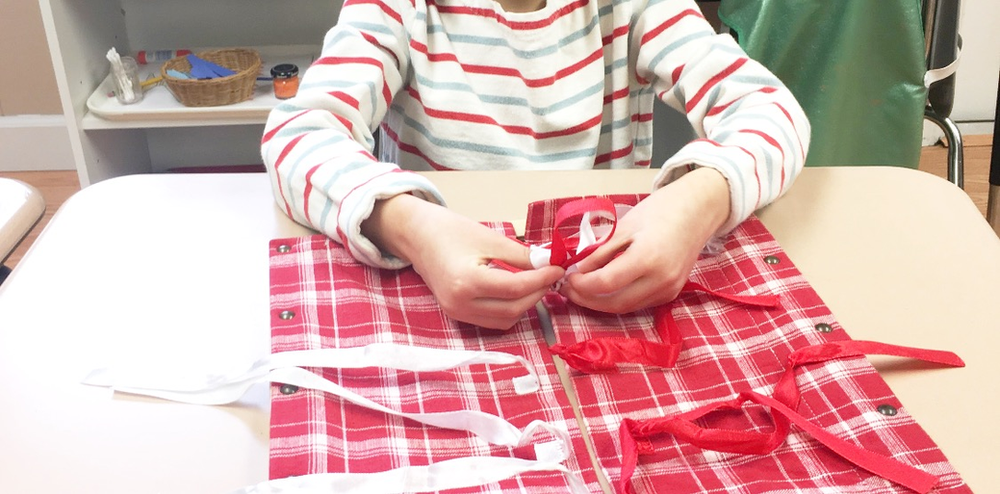
In most Montessori classrooms, you'll find a standing rack with a number of curious frames hanging on it. One frame includes panels of cloth to close together with a zipper. Another frame is closed by snaps. Another by large buttons. Another by small. Sometimes you'll find Velcro frames, or toggles, or laces, or ribbons to tie.
Remember the purposes of Practical Life: to develop independence, concentration, coordination and order. The Dressing Frames are exemplary of each of these purposes demonstrated together in a single work. For each frame, the child is presented a simple method for securing the cloth. Then, the child may work independently to master the technique. Learning to master these common closures allows the child to build his or her ability to dress independently and to help others with less proficiency.
When you watch children with the dressing frames, you're likely to see the concentration evident on the child's face. Her fingers may be deeply engaged in the seemingly simple task of buckling, her eyes focused on the work. While we engage in these processes by rote, barely even thinking about the steps we're taking when we tie a shoe or buckle a belt, the child is mesmerized and mindful. It's in these moments of uninterruptible concentration that the wonder of the Montessori materials is most evident. When a material matches the development of the child, the child is drawn to that work and will remain with it for long periods of time until it is mastered.
At home, look for simple ways for your child to practice the closures he or she will find most frequently in the closet. Allow time for practice with ribbon tying or buckling a belt around a favorite animal. Don't pressure it… but let these activities be available for your child just as helping in the kitchen might be. And when your child is practicing on his or her own clothing, allow ample time for the trial and error it might take to snap those snaps or pull the zipper. That your children have dressed themselves will be far more important to the development of persistence and agency than that they are wearing the same socks or that their shoes are on the right feet. After much practice, mastery will be developed, but we can't take that practice from the child by doing these tasks for him, and we can't rush along the mastery. It's a great joy to our teachers when a child arrives to school, misbuttoned and wearing her shoes on the wrong feet, because it means the child has done it herself. We'll take bedraggled but independent anyday.
#ForParents #ForTeachers #PracticalLife #Curriculum #Primary #FirstPlane
